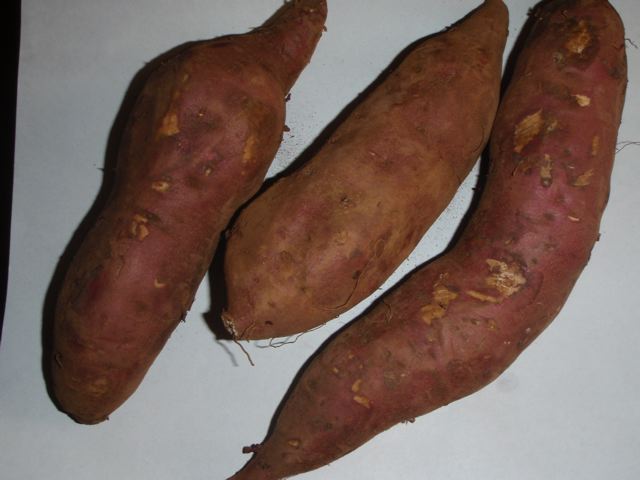Weeds
Grasses
Sedges
Broadleaf
Diseases
Fungal
Bacterial
Viral
Agro-ecology
Crop rotation, proper selection of clean planting materials, deep planting, eradication of Ipomoea weeds, and regular
hilling-up are practices which will reduce the attack of sweet potato weevils. Sweet potato weevils are the most destructive insect pests which cause damage and yield loss in the tropics and subtropics (CABI, 2004).
Plant sweet potatoes in fields where they have not been grown in 2 years. Avoid planting sweet potatoes in fields previously planted with grasses or grains. Some of the insect pests attacking grains also attack sweet potatoes (Ellis; Bradley, 1996: p. 222).
Use only disease-
free planting materials. Soak planting materials in compost tea prior to planting to prevent plants from fungal pathogens. To prepare you own compost tea, mix 1 part of well-done compost with 6 parts of water. Leave filtrate for 1 week. After straining it is ready for use (Ellis; Bradley, 1996: pp. 426-427).
Mulches such as plant straws warm the soil and control weeds. Hand weeding is recommended for late growing weeds to prevent a disturbance of the vines' growth.
Apply dried farm manure and compost in the furrows under the ridges at the rate of 5-7 tons per hectare. However, care should be taken when applying fresh farm manures on fertile loam soil because these lead to oversized and irregular shaped roots. Green manuring is also recommended. Plow-under green manures 1 month before planting (ATTRA, 2001).
To prevent sweet potato rot (caused by bacterial and fungal diseases) in storage, soak potatoes in 10% bleach solution: 1 part bleach to 9 parts water, for
few minutes before curing (Ellis; Bradley, 1996: p. 222).
Further information
The International Potato Center is focusing its breeding program on the improvement of quality and insect resistance. Researches on breeding activities are also being carried out in China, Japan and Taiwan. Breeding activities are also in progress in the Philippines and Indonesia.
Sweet potato
cultivars which are resistant to scab, Fusarium wilt, little leaf, black rot, and root-knot nematode are now available. Ask for assistance from your local agricultural offices to have access to these cultivars. However, a cultivar resistant to sweet potato weevils is not available.
External links
References
- Amalin, D.; Vasquez. E. (1993): A handbook on Philippine sweetpotato pests and their natural enemies. International Potato Center (CIP). Los Baños, Laguna, Philipppines.
- Ellis, B.; Bradley, F. (1996): The organic gardener's handbook of natural insect and disease control. Rodale Press. Emmaus, Pennsylvania.

